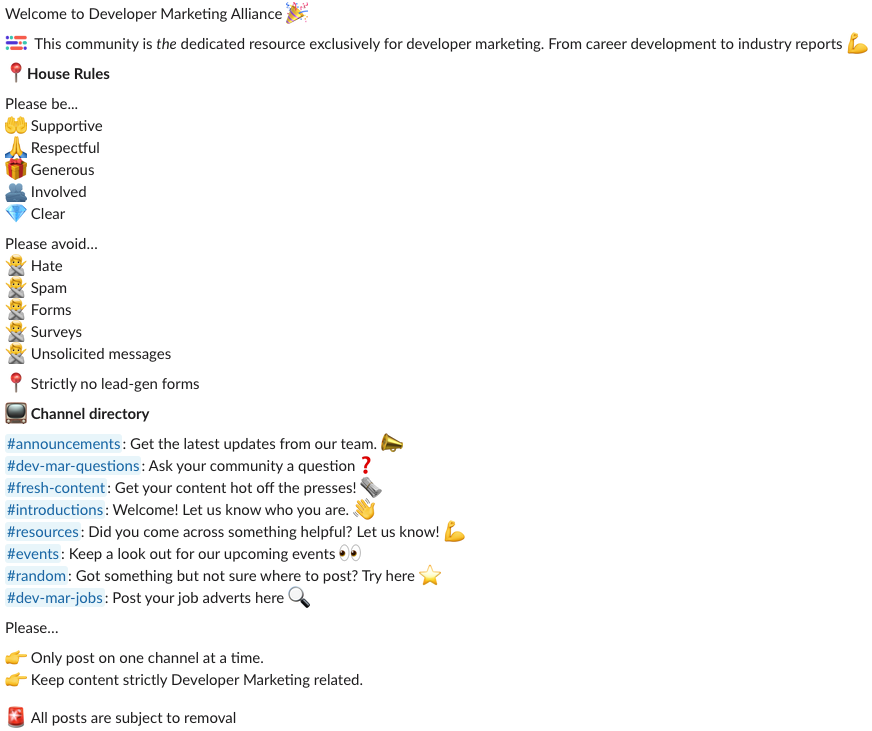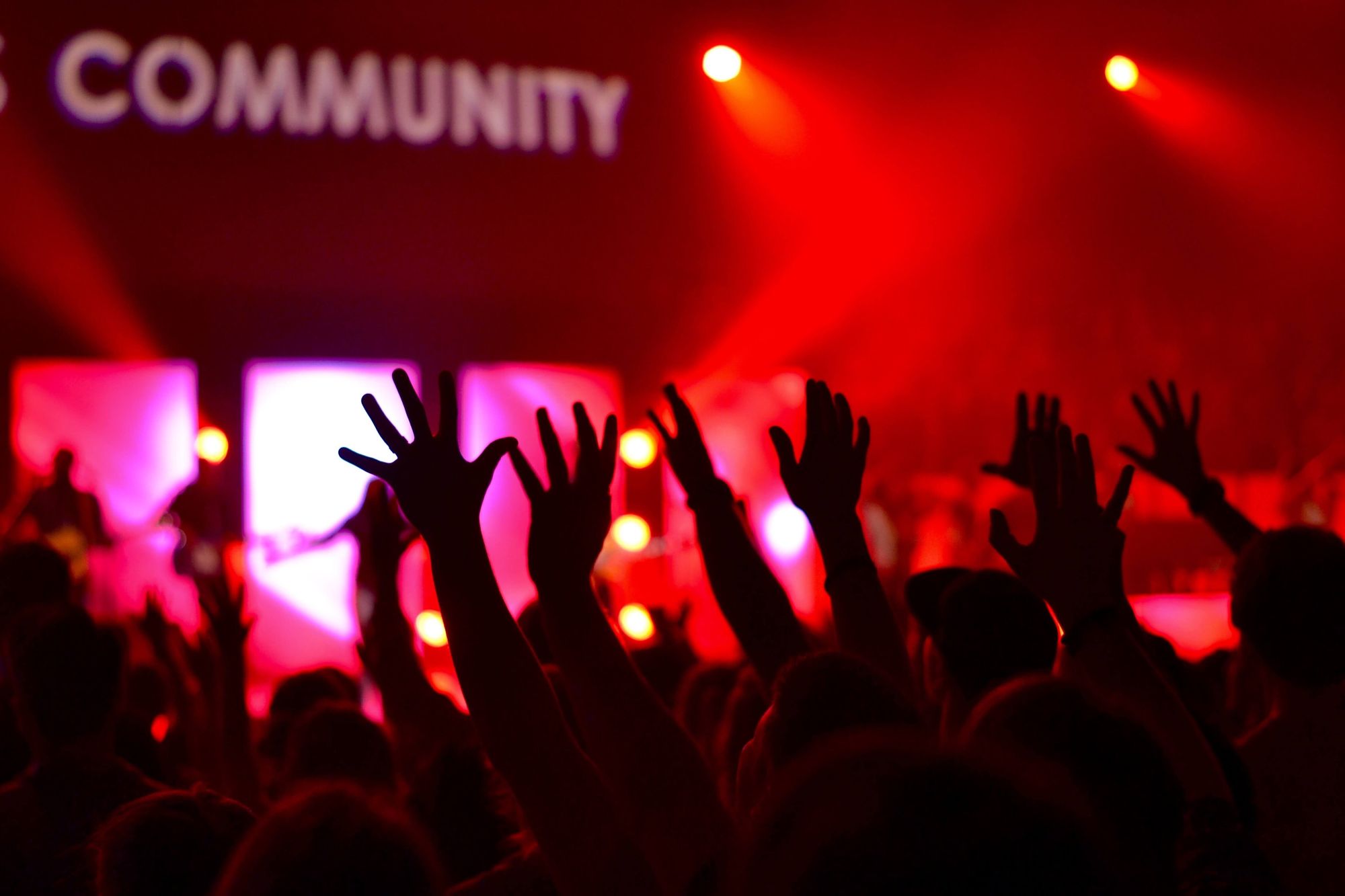The best developer communities serve as a valuable resource to businesses. They help companies implement improvements to products, enhance their reputation, and drive sustainable growth.
What’s more, well-managed developer communities can foster increased innovation, collaboration, and advocacy for your product.
But managing a community is more than just creating a platform and letting developers run wild on it. Community managers need to establish clear guidelines to ensure that members feel welcome, included, and free to share their thoughts without judgment.
In this article, we’ll run through the top guidelines and best practices you should be using to create an inclusive, trusting, and engaged developer community.
Let’s dive in! 👇
Why are developer community guidelines important?
Moderation guidelines are instrumental in maintaining a respectful, supportive, and thriving dev community. You want to make sure that members feel welcomed into your community and want to stay.
Guidelines help to ensure that interactions and discussions within the community remain respectful and professional, and stop any harassment, bullying, and discrimination from occurring, facilitating a safe space for all members to share their thoughts.
Guidelines are also designed to encourage developers to share quality content, keep conversations on-topic, and also discourage non-constructive posts. This way, the community remains a place where developers can have meaningful and productive conversations, and businesses can collect valuable insights and feedback.
A well-moderated community will attract high-quality contributors, and increase engagement and shared learning among members.

Essential guidelines to help you manage your developer community
Now that we know just how important community guidelines are, which ones are the best to implement? We’ll take you through the top developer community guidelines everyone should be using.
Set up a welcome message
The first step should be to welcome your new members into the community. Pin the message at the top of the group so it’ll be the first thing they see when they join.
Include key information about the aim of your community, including why it exists and what members can post. If your community resides on a platform like Slack or Discord, you can create channels for different topics, and then you can explain what each designated channel is for in your welcome message.
You could even create an ‘introduction’ channel and direct your new members to it to introduce themselves to the community. You could also tag all new members in a weekly post and encourage the rest of the community to say hello and welcome them in. These little things will make developers feel immediately included in your community.
Establish a code of conduct
Set out a code of conduct that clearly establishes how members should behave within the community. These rules should cover the need to respect each other’s opinions and emphasize zero tolerance against any harassment or discrimination.
Examples of prohibited conduct could be:
- Don’t use hateful or insulting language.
- Don’t post discriminatory content or use language that’s deemed racist, sexist, homophobic, transphobic, etc.
- No doxing or posting personal information about other members.
- No scamming or deceptive posts.
- Don’t discuss or engage in any unlawful activities.
- Don’t post any mature content.
- Don’t spam the group (only post your content once and don’t cross-post the same content in multiple channels).
- No unsolicited advertising; any authorized promotions should be kept within designated areas.
Make sure that your code of conduct is direct and simple to understand. Avoid any vague or complex terms that could cause confusion or allow members to create loopholes.
Also, make sure that you aren’t too restrictive or extensive with your guidelines, as members can become overwhelmed and afraid to post anything in case their content breaks the rules.
The code of conduct should simply be in place to ensure that members interact with each other in a respectful manner and prevent any irrelevant or inappropriate content from being published.
Here's an example from our Slack channel:

Consistently moderate
Once you’ve established your code of conduct, you can start to moderate your community's activities.
Moderating a developer community involves:
- Looking out for and removing any offensive or inappropriate content, and ensuring all members maintain a professional and respectful tone.
- Making sure that discussions remain relevant and are kept in the right channels. Some off-topic conversations can be beneficial for building relationships, but it’s important to make sure that posting unrelated content doesn’t become too excessive.
- Keeping the community tidy. Remind members to put their content in the most relevant places so the community remains easy for everyone to navigate.
Ensure that you have clear rules in place about what happens if members don’t adhere to your guidelines. This could range from removing posts, giving out warnings and temporary bans, to permanent removal from the community, depending on how frequent or severe the rule break is.
Remember, your guidelines need to be enforced fairly and consistently to keep your community a positive and welcoming place. Make sure that you explain your decisions clearly to members and be open to receiving feedback on your moderating.
It’s important to monitor your community’s activities continuously and intervene only when necessary. If members feel that your moderating is too strict, they might not want to stick around.
As your community grows and becomes trickier to monitor, it can be a good idea to implement tools that help you edit, flag, and delete inappropriate content. This’ll free up more time for you to focus on other tasks and ensure your community management remains consistent and efficient.

Encourage collaboration
One of the primary purposes of a dev community is for members to collaborate and share knowledge. As such, it’s important to encourage and remind developers to help each other with any issues or questions, work together on solving problems, and provide constructive feedback on projects.
Helping your members to connect with each other will increase engagement, build trust, and ensure that your members continue to be active in the community.
Provide quick responses
Community members will naturally come to you with questions and concerns, and providing a quick response will show that you’re active and committed to supporting your community.
Plus, if your members feel heard and are supported in an efficient manner, they’re more likely to continue participating in discussions and contributing to the community in general.
But while it’s important to provide swift responses, you should also ensure that they’re accurate and correct. A hasty or incorrect answer can make your community lose trust in you.
Review and update guidelines
As your community expands and evolves, new topics, issues, and technologies will begin to emerge. Therefore, it’s vital to review and update your guidelines so they remain relevant and beneficial to your members.
Over time, you’ll learn what works and doesn’t work for your specific community. So by regularly updating your guidelines, you can help to improve the functionality of the developer community.
It’s a good idea to communicate any guideline changes to the community, along with your reasons for making these changes and how the community is expected to adhere to them. Also, ask for feedback on any updates to ensure your guidelines serve the community effectively and aren’t too restrictive.
Conclusion
A closely monitored and well-managed developer community can be instrumental in driving success for your business.
Creating a welcoming environment, establishing clear, accessible guidelines, and providing timely responses help to encourage lively discussions and increased participation from your members.
Adopting the rules and best practices listed in this article will allow you to create an inclusive, trusting, and sustainable community that benefits all members, as well as your business.
Join our growing community of developer marketers, developers, DevRel specialists, and more, and stay on top of the latest in the industry. Also, follow us on LinkedIn!





